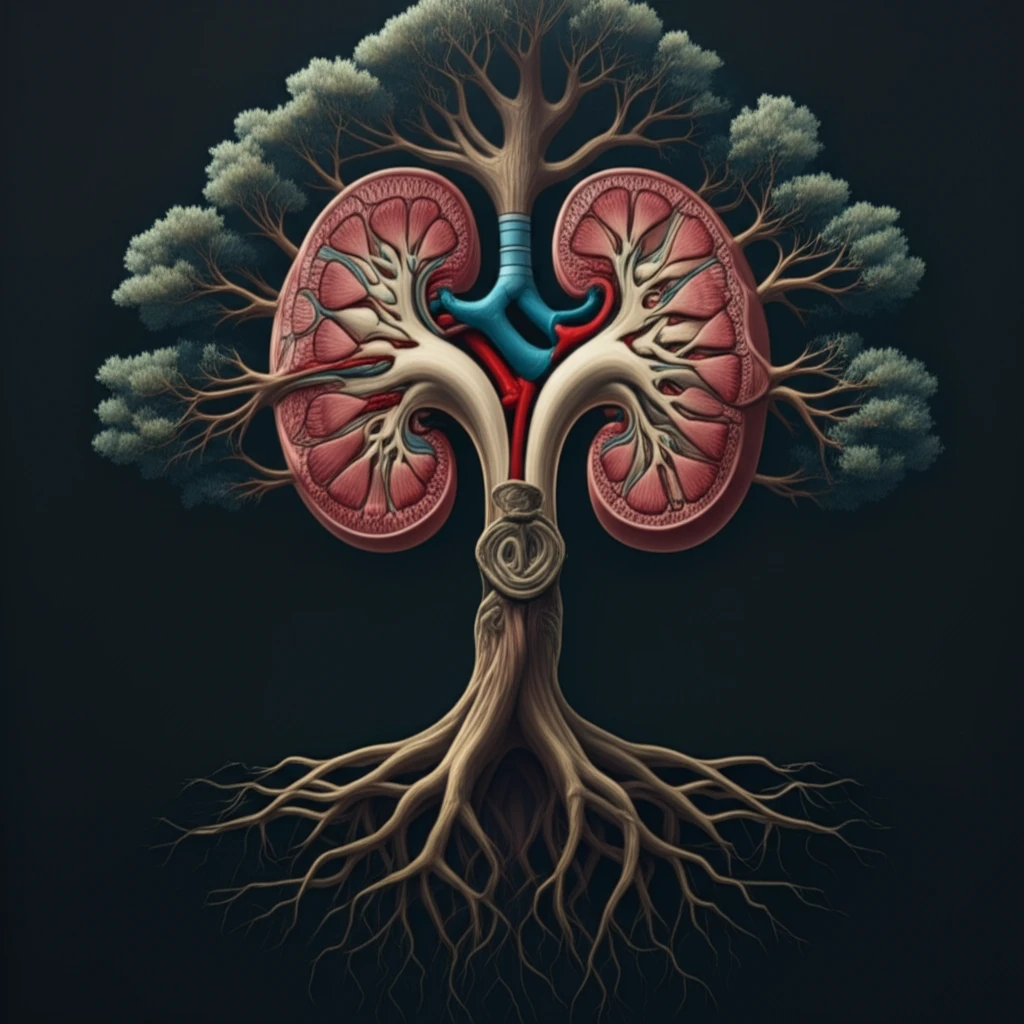
When Cancer Spreads: Understanding Renal Sarcoma and Pulmonary Embolism
"A rare cancer with a dangerous twist: how renal sarcoma can lead to life-threatening complications in the lungs, and what doctors are doing to fight back."
Renal sarcoma, a rare type of kidney cancer, poses significant challenges due to its aggressive nature and potential for serious complications. One such complication is the development of venous tumor thrombus, where the tumor extends into the veins. While complete surgical removal is the primary goal, the rarity of this cancer means doctors often rely on individual case reports to guide treatment decisions.
Recently, doctors encountered two cases of renal sarcoma complicated by malignant pulmonary emboli – a life-threatening condition where cancerous material blocks blood vessels in the lungs. These cases, combined with a review of existing medical literature, highlight a concerning trend: renal sarcoma tumor thrombus appears to carry a high risk of spontaneous and intraoperative embolization (the release of tumor fragments into the bloodstream).
This article will delve into these cases, exploring the connection between renal sarcoma and pulmonary embolism. It will outline the experiences of the physicians involved and discuss measures that may help lower the risk of venous tumor embolization in patients battling this challenging disease.
The Hidden Danger: How Renal Sarcoma Leads to Pulmonary Embolism

Sarcomas make up only a small percentage (approximately 1%) of all primary renal neoplasms. Among the documented cases of post-pubertal patients with renal sarcoma that extends into the inferior vena cava (IVC), a significant number have also experienced malignant pulmonary emboli (PE).
- Case 1: A 17-year-old male presented with flank trauma and hematuria. Imaging revealed a large right renal mass with IVC tumor thrombus. Despite surgery, the patient developed postoperative dyspnea and bilateral pulmonary emboli, leading to death three months later. The source of bland thrombus was not found.
- Case 2: A 43-year-old female presented with dyspnea, hematuria, and flank pain. She was initially treated for a presumed benign PE, but further investigation revealed a large left renal mass with IVC extension and bilateral proximal PE. Despite interventions, including nephrectomy and thrombectomy, the patient's condition was complicated by the invasion of malignant emboli into the bronchial walls. She passed away a month later.
Reducing the Risk: What Can Be Done?
The connection between renal sarcoma and PE is an important area of concern. Existing data suggests that sarcoma tumors might be more prone to fragmentation compared to renal cell carcinomas. Differentiating between these cancers before surgery can be difficult, highlighting the need for vigilance when encountering any large kidney tumor, especially in younger patients.
Given these risks, doctors recommend a multidisciplinary approach, involving oncologists, surgeons, and other specialists, to carefully evaluate each case before proceeding with surgery. When renal sarcoma with venous tumor thrombus is suspected or confirmed, certain measures may help minimize the risk of malignant embolization:
<ul><li><b>Expedient nephrectomy:</b> Prompt surgical removal of the affected kidney.</li><li><b>Preoperative renal angio-infarction:</b> A procedure to shrink the thrombus before surgery.</li><li><b>Careful intraoperative thrombus handling:</b> Meticulous surgical technique with early control of the proximal veins to prevent tumor fragmentation.</li></ul>
